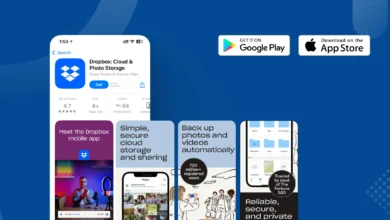Unlocking the Power of Reliable Market Intelligence: Why You Need a stock data api

In a world where financial markets move in milliseconds, staying ahead requires more than intuition — you need real-time insight. That’s where a robust stock data API comes in. At its core, this kind of service lets you access reliable, programmatic streams of market information, from live quotes and trades to historical charts and fundamentals. With that data in hand, you can build smarter tools, power trading strategies, or deliver insights to end users.
One compelling offering in this space is Finage’s Stocks Data API & WebSocket package (see product page). They provide low-latency access to data from more than 15,000 U.S. stocks and over 100,000 global symbols — plus up to ten years of historical data, aggregated views, tick-level data, and continuous streaming via WebSockets.
In this article, I’ll walk through:
- What a stock data API really offers
- Key use cases and value for different users
- Choosing the right provider (using Finage as example)
- Best practices and caveats
- How to get started
Let’s dive in.
1. What is a stock data API, and why does it matter?
At its simplest, a stock data API is a service (often RESTful or WebSocket-based) that gives applications programmatic access to market data: quotes, trades, OHLC (open/high/low/close) bars, aggregates, and sometimes financial fundamentals or news.
Real-time vs Delayed vs Historical
- Real-time streaming / WebSocket: Pushes updates instantaneously when trades or quote changes happen.
- Delayed or snapshot: Gives the latest data as of a short delay (e.g. 15–20 minutes).
- Historical / backfill: Offers archives of past prices, volumetric data, sometimes intra-day bars or tick-level records.
High-end providers also layer on features like order book depth, aggregate data (e.g. minute bars, daily bars), splits/dividends adjustments, and company fundamentals or metadata.
The advantage? Instead of manually scraping websites, paying for terminals, or lagging behind the market via CSV dumps, you get structured, on-demand access to market data directly into your code. That unlocks automation, speed, and scalability.
2. Use Cases: Who benefits and how
A stock data API can support a wide range of applications and actors. Here are a few:
Quantitative & algorithmic trading
Algorithmic strategies need up-to-the-moment data to compute indicators, signals, and trade decisions. WebSockets with low latency make that possible.
Backtesting and model development
Historical data is essential to validate strategies. A 10+ year archive helps simulate over many market regimes.
Fintech / trading apps and dashboards
If you’re building a stock screener, portfolio tracker, charting tool, or mobile trading platform, embedding live quotes and chart data is fundamental to UX.
News / sentiment platforms
Combining quote data with news or social signals lets you show price–news correlation, alert users of big moves, or flag volatility spikes.
Alerts, bots & notifications
Trigger alerts when a stock crosses thresholds, volume spikes, or volatility increases. You need streaming data or frequent polling to power that reliably.
Academic research & financial analysis
For finance students or researchers, access to granular historical data is invaluable for validating hypotheses, studying patterns, or replicating published papers.
Because the use cases differ (speed, granularity, cost), the right API solution often depends on your specific needs.
3. What to look for — and how Finage stacks up
When you evaluate a stock data API, here are crucial criteria:
| Feature | Why it matters | How Finage addresses it |
| Coverage | You want access to U.S. and global symbols | Finage covers 15,000+ U.S. stocks and 100,000+ global symbols |
| Latency / speed | For time-sensitive apps, delays kill performance | Finage offers “low-latency” APIs and WebSocket streaming |
| Historical depth | More years = more robustness in backtesting | Finage provides 10+ years of historical data |
| Data types / granularity | Tick-level, aggregates, OHLC, snapshots, fundamental data | Finage supports trades, quotes, aggregates, end-of-day, and fundamental metrics |
| Scalability & request limits | If your app scales, you’ll need unlimited or generous quotas | Finage advertises “unlimited API calls” in their commercial plans |
| Pricing & plans | You want transparency and flexibility | Finage shows pricing tiers for U.S., global, delayed, etc. |
| Reliability / Uptime / SLAs | Data availability is non-negotiable for serious apps | Finage positions itself as “institutional-grade connectivity” |
| Support & documentation | Developer experience matters | Finage provides documentation, a “playground”, and support channels |
Let’s look at a few specific highlights from the Finage Stocks product page:
- WebSocket streaming: Instead of polling, you can subscribe and get push updates. This reduces network waste and improves responsiveness.
- Global coverage and symbol universe: Enables applications that aren’t just U.S.-centric.
- Flexible plans & free trial: Finage offers a 3-day trial for all markets, letting you test latency, data types, and integration before committing.
- Transparent pricing tiers: They show pricing for U.S. real-time, global real-time, and delayed data.
All told, Finage is a compelling option — especially if you want developer-friendly access and wide coverage.
4. Best practices and potential pitfalls
Integrating a stock data API sounds straightforward — “just call the endpoint, get a JSON back” — but there are real challenges and nuances to keep in mind.
Rate limiting & efficient use
Even “unlimited” plans often come with hidden limits (burst caps, throttling, etc.). You should batch requests, cache where possible, and avoid unnecessary polling. Use WebSocket streaming where feasible.
Handling missing or inconsistent data
Markets sometimes have missing ticks or adjustments (splits/dividends). Your app must gracefully handle nulls, dropped connections, and backfill gaps.
Time zones, market holidays, and extended hours
Stock markets have nuances: pre-market, after-hours sessions, holidays, daylight savings. Your logic must align with the market’s trading schedule.
Latency & real-time freshness
Even milliseconds can matter in high-frequency or alert systems. Monitor lag, test under load, and measure delays from API to your app.
Data licensing, attribution & usage terms
Be sure you read the provider’s legal terms. Some APIs restrict redistribution, real-time sharing, or public display. Finage, for example, disclaims liability and restricts redistribution in its terms.
Fallbacks & redundancy
If the streaming connection fails, gracefully fall back to HTTP polling, backup servers, or redundancy APIs.
Security & access control
Manage your API keys carefully. Implement usage limits, rate-checking, and safeguard your secrets.
By following these best practices, you can build a resilient, performant application.
5. How to get started with a stock data API (using Finage as example)
Here’s a step-by-step roadmap to integrate such a system:
- Sign up and trial
Start with the free 3-day trial on Finage to explore latency, endpoints, and data types.
- Select relevant endpoints
Decide which APIs you’ll call: last-quote, aggregate, historical, snapshot, trades, etc.
- Set up WebSocket subscriptions
For real-time data, connect via WebSocket and subscribe to symbols you care about.
- Design your caching & polling logic
For non-streamed endpoints, cache frequent requests. Avoid hitting the same endpoint repeatedly.
- Time alignment & data normalization
Ensure timestamps are converted to your app’s timezone. Adjust OHLC data for splits/returns if needed.
- Error handling & fallback
Reconnect logic, rate-limit backoff, and failover to HTTP polling when streaming drops.
- Testing under load
Simulate bursts, high volume, and concurrency to see how your integration behaves.
- Monitor & log performance
Track latency, missing ticks, data gaps, and errors. Create alerting around anomalous behavior.
- Move to production
Once you’re confident, upgrade to a paid plan (if needed) and deploy.
- Iterate and expand
Add more symbols, integrate fundamentals or news, and enhance UX (charts, signals, notifications).
Final thoughts
In today’s fast-moving markets, access to timely, accurate, and scalable market data is non-negotiable. A well-chosen stock data API is the foundation for building anything from dashboards and stock screeners to algorithmic systems and alert platforms.
Finage’s Stocks product demonstrates how a modern data provider can balance broad coverage, real-time streaming, historical depth, and usability — all backed by transparent pricing and developer-friendly tools.




